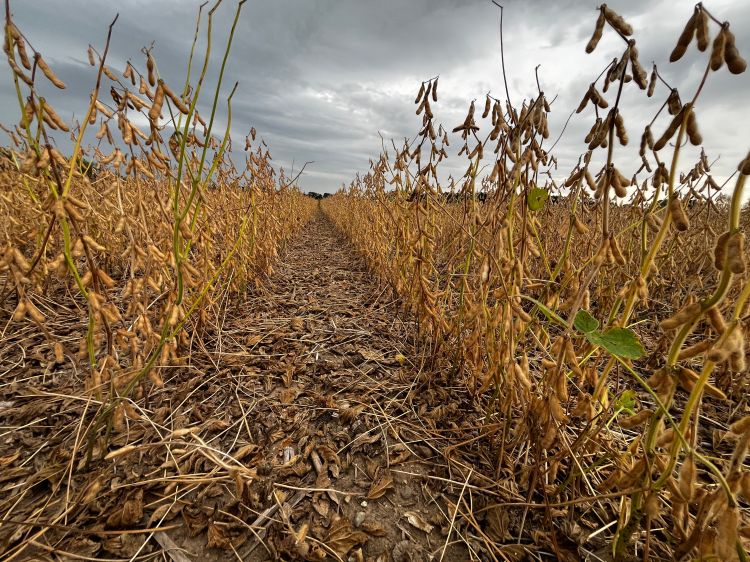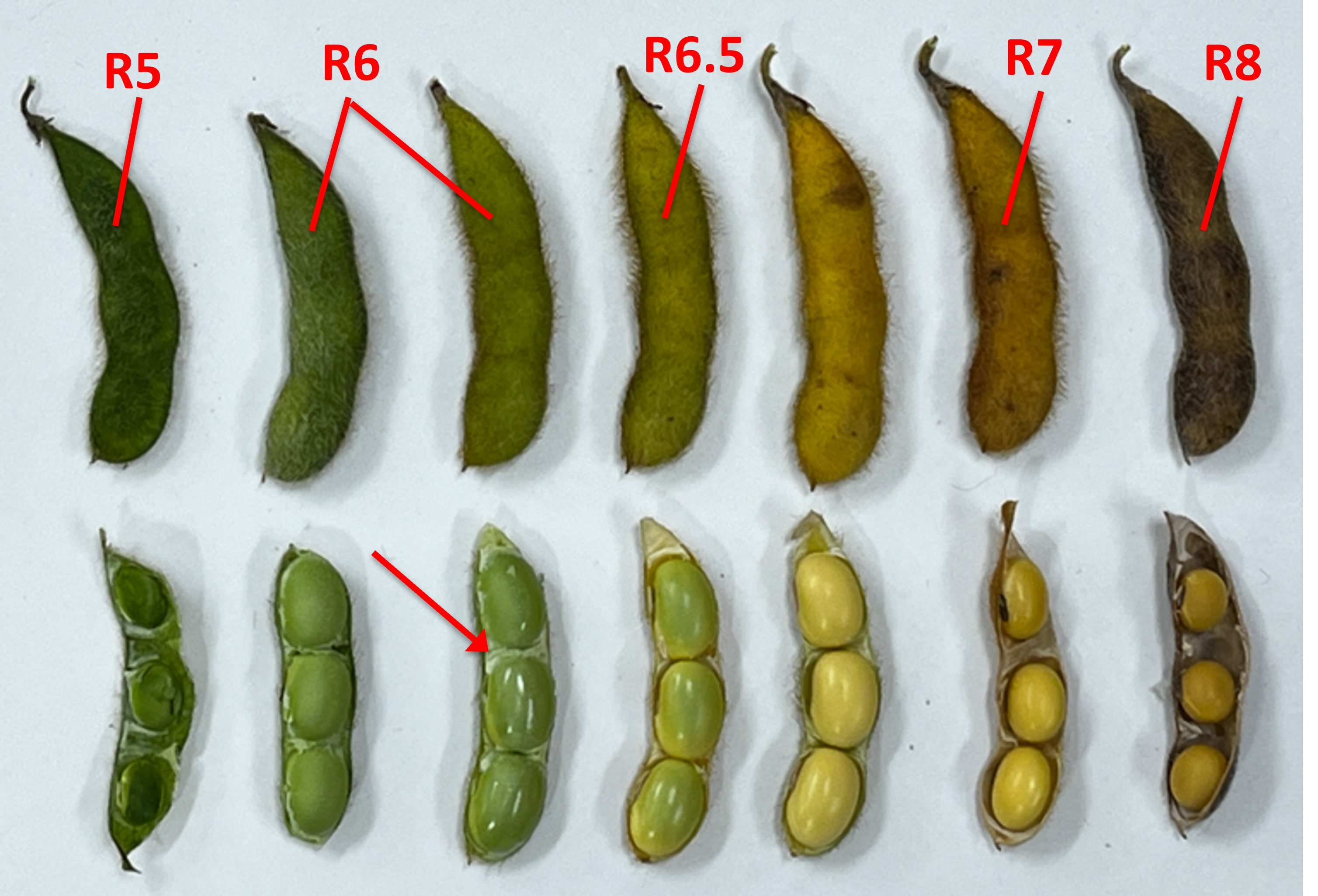Thinking about desiccating soybeans?
Certain soybean harvest challenges may be addressed with the practice of applying a desiccant prior to harvest, but is this practice beneficial for farmers in Michigan?

Soybean farmers in Michigan often face several challenges at harvest time. One is having part of a field ready for harvest while the plants in other parts are still too wet or even green. Another challenge in some years is getting soybeans harvested early enough for a timely winter wheat planting. Weed growth can also cause problems during harvest, particularly when weeds are still green and tend to wrap around the combine head or cause problems with the crop feeding into the head.
One practice commonly used by soybean farmers in the southern U.S. and dry bean growers in Michigan may help alleviate some of these challenges for Michigan soybean farmers. Desiccation involves applying a herbicide or desiccant (drying agent) to a crop to cause plant death or quicken dry-down. In a survey prior to the 2024 Soybean Harvest Equipment Field Day, 53% of respondents indicated they knew a little about desiccating soybeans but were interested in learning more, and 4% were interested in trying it on a field.
A desiccant should have a short pre-harvest interval (PHI) so the crop can be harvested once the desired grain moisture level has been achieved. Care should also be taken to ensure the chemical applied will not negatively impact establishment of the following crop or cover crop (rotation restrictions). Three herbicides labeled as harvest aids include paraquat (Gramoxone), saflufenacil (Sharpen) and sodium chlorate (Defol-5) (Table 1). Various adjuvants (e.g., crop oil concentrate, methylated seed oil, non-ionic surfactant) are required or recommended according to product labels.
Table 1. Three labeled desiccants with active ingredients, rates of application and pre-harvest intervals (PHI) for soybean. Excerpted from Table 2J – Soybean – Preharvest Applications in the MSU Bulletin E0434-2025, 2025 Weed Control Guide for Field Crops.
|
Product |
Active ingredient |
Rate |
PHI |
|---|---|---|---|
|
Gramoxone |
paraquat |
10.7 oz |
15 |
|
Sharpen |
saflufenacil |
1–2 oz |
3 |
|
Defol-5 |
sodium chlorate |
4.8 qt |
0 |
Research in Mississippi and Louisiana has found desiccating as early as R6.5 (Figure 1) does not impact seed yield or quality. However, researchers in Minnesota and Wisconsin observed yield losses of 10–15% when desiccants were applied at R6.5 (personal communication).
Research conducted by Waldecker et al. in 2023–2024 at Michigan State University (manuscript submitted for publication) tested saflufenacil, paraquat and sodium chlorate with two maturity groups (typical and late) at three timings (R6.5, R7 and non-treated control) over four site-years. They found that while only paraquat and sodium chlorate were effective at desiccating soybeans, the differences with rate of desiccation and seed dry-down between treated and non-treated plants did not justify the added cost and risk of yield loss. These results showed the benefit of drying down soybean with a desiccant are limited. They suggested desiccation may be beneficial if other harvest factors (e.g., excessive weed growth) justified the use of a pre-harvest treatment.

The most extensive study to date was conducted by the Science for Success team of soybean researchers in 2024 at 19 locations across 13 states. The treatments included two planting dates, three maturity groups and three desiccation timings (R6.5, R7, and a non-treated control) at almost all locations. Results in the north region (Minnesota, Wisconsin, Nebraska, Iowa, Illinois, Ohio) were different from those in the south region. In the north region, seed yield was reduced 8.2 and 6.5% for short and normal maturity groups, respectively, when sodium chlorate was applied at R6.5 compared with the non-treated control and application at R7. Protein and oil were reduced by 9.2% and 10.7%, respectively. They found desiccation at R7 rarely impacted grain yield and protein and oil content, and application at either timing decreased incidence of green stem 55% of the time in the north.
Soybean seed yield accumulation between R6.5 and R7 is typically 5-15% of the total, so yield reductions due to premature plant death during this window are not unexpected. For Michigan farmers, Michigan State University Extension recommends not applying a desiccant prior to R7 to avoid yield loss and only in situations where other reasons exist for using a pre-harvest treatment. The benefits of the practice need to be weighed against the possible costs on a farm-by-farm basis.
Benefits
- Induce uniform seed moisture across a variable field
- Potentially control weeds depending on desiccant selected
- Quicken harvest period, reducing risk of shatter loss with wet-dry cycles
- Allow for timely winter wheat or cover crop planting
- Potentially reduce difficulties in harvest associated with green stem, although results vary
Challenges
- Yield loss likely if applied before yield has been set
- Need higher temperatures and humidity for efficient and quick desiccation
- Harvest may only be a few days earlier than normal to achieve desired grain moisture and to account for pre-harvest interval (depending on desiccant used)
- Cost of products and application and possible yield loss may make the practice unprofitable
- Greater shatter losses possible if not harvested at optimum time after desiccation
- Seed quality can be impacted if desiccant applied too early
Thanks to Manni Singh, Mark Seamon and Christy Sprague for reviewing this article.



 Print
Print Email
Email